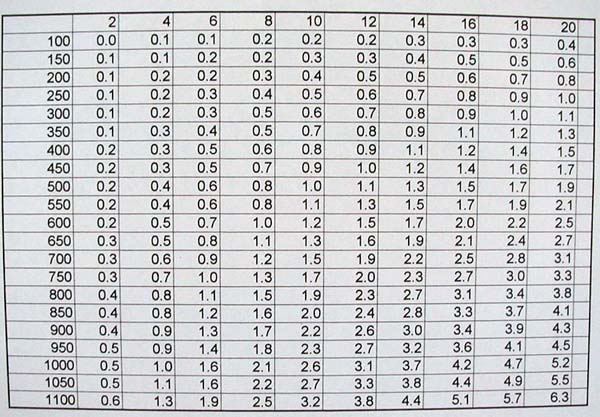I have acquired the new version of Shooter Ready, and I find it to be a serious training tool - if you use it seriously.
Here's how I'm doing that.
It's easy to achieve hits, if you set the atmospheric and load parameters up in your ballistic software, put in each shot, and let it calculate the settings. Trivial. Uninteresting - except as a way to burn time. I'd rather play solitaire.
What I do is to set it up to practice field shooting without all the electronic aids I typically carry.
I use the following shooting aids:
(1) I print off a Density Altitude ballistic card for each load on JBM Ballistics. The simulation provides the load parameters. I print the card off using only the basic temperature supplied by the simulation, and then manually correct the velocity for temperature changes. (If you don't know how to do that, see Making Ballistic Cards Using Density Altitude.
(2) I use the DA calculator HERE.. I do that because the simulation provides only sea-level-referenced barometric pressure. An alternative method would be to use the Excel chart and temperature compensation chart from Manual Calculation of Density Altitude. To do that, though, you'd need to use the SLBP and correct it to get the station pressure to use those aids. Since I carry a watch which gives me station pressure in the field, and I have practiced extensively to manually calculate DA using the methods in that article, I don't do that. You might wish to.
(3) I use a Mildot Master to do the ranging calculations, and also the calculations for inclined shots.
(4) I use a printed wind chart which I carry in the field for a 175 SMK at 2600 fps to make the wind calls. A photograph of that chart is below.
When using other loads, I use a ballistic program which makes a wind chart very similar to that one.
Then I run the simulation. I calculate each shot, then note the results. If I haven't hit the target where I expected to, I evaluate my calculation to find the error.
Doing this is fun - but it's also excellent practice in the application of the skills necessary to making hits on UKD targets in the field.
The wind calls are of course not as complex as the ones you will find in the field. But it's still excellent serious practice in the application of field shooting skills - if taken seriously.
Shooter Ready is an excellent simulation. It's also a good question. Shooter Ready?
The wind chart for a 175SMK, velocity 2600, at sea level on a 75 degree day. Rows are range in yards, columns are wind speed in MPH, the data in the cells are wind hold in mils.

Here's how I'm doing that.
It's easy to achieve hits, if you set the atmospheric and load parameters up in your ballistic software, put in each shot, and let it calculate the settings. Trivial. Uninteresting - except as a way to burn time. I'd rather play solitaire.
What I do is to set it up to practice field shooting without all the electronic aids I typically carry.
I use the following shooting aids:
(1) I print off a Density Altitude ballistic card for each load on JBM Ballistics. The simulation provides the load parameters. I print the card off using only the basic temperature supplied by the simulation, and then manually correct the velocity for temperature changes. (If you don't know how to do that, see Making Ballistic Cards Using Density Altitude.
(2) I use the DA calculator HERE.. I do that because the simulation provides only sea-level-referenced barometric pressure. An alternative method would be to use the Excel chart and temperature compensation chart from Manual Calculation of Density Altitude. To do that, though, you'd need to use the SLBP and correct it to get the station pressure to use those aids. Since I carry a watch which gives me station pressure in the field, and I have practiced extensively to manually calculate DA using the methods in that article, I don't do that. You might wish to.
(3) I use a Mildot Master to do the ranging calculations, and also the calculations for inclined shots.
(4) I use a printed wind chart which I carry in the field for a 175 SMK at 2600 fps to make the wind calls. A photograph of that chart is below.
When using other loads, I use a ballistic program which makes a wind chart very similar to that one.
Then I run the simulation. I calculate each shot, then note the results. If I haven't hit the target where I expected to, I evaluate my calculation to find the error.
Doing this is fun - but it's also excellent practice in the application of the skills necessary to making hits on UKD targets in the field.
The wind calls are of course not as complex as the ones you will find in the field. But it's still excellent serious practice in the application of field shooting skills - if taken seriously.
Shooter Ready is an excellent simulation. It's also a good question. Shooter Ready?
The wind chart for a 175SMK, velocity 2600, at sea level on a 75 degree day. Rows are range in yards, columns are wind speed in MPH, the data in the cells are wind hold in mils.



